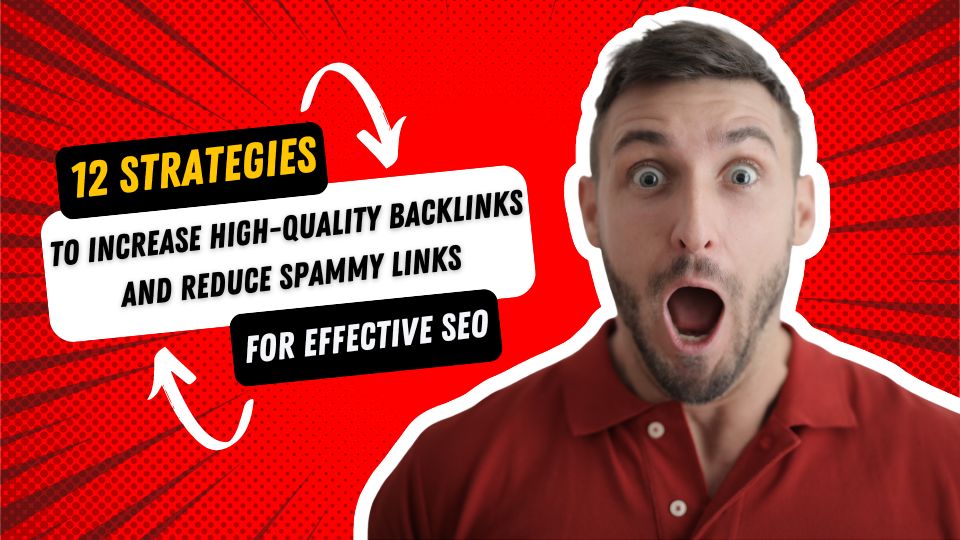
In the world of digital marketing and SEO, the adage “content is king” has been a guiding principle for years. However, as the internet has evolved, so have the methods for creating and distributing content. Among these methods, content farms have emerged as a significant concern, not only for their detrimental impact on search engine results but also for the ethical issues they raise. This article aims to provide a comprehensive understanding of content farms, their impact on SEO, the ethical dilemmas they present, and, most importantly, how you can protect your SEO strategy from being undermined by such practices.
What Are Content Farms?
Content farms are websites or networks of sites that mass-produce low-quality content designed primarily to rank for a wide range of keywords. These sites generate content at scale, often prioritizing quantity over quality, with the primary goal of driving traffic and monetizing it through ad revenue or affiliate marketing.
Real-World Example: Demand Media and eHow
A classic example of a content farm is Demand Media, which once operated popular sites like eHow. These platforms churned out articles on virtually every topic under the sun, often using freelance writers paid per article, regardless of the depth or accuracy of the content. While this model was highly profitable in the short term, it led to a flood of low-quality content that eventually prompted search engines, particularly Google, to take action.
The Impact of Content Farms on Search Engine Results
Content farms have historically been able to manipulate search engine rankings by flooding SERPs with keyword-stuffed, thin content. This has several negative consequences:
- Degraded User Experience: Users searching for information are often directed to content that is shallow, uninformative, and fails to meet their needs. This not only frustrates users but also diminishes trust in search engines.
- Increased Competition for High-Quality Sites: Content farms can occupy valuable positions in SERPs, pushing down legitimate content from authoritative sources. This makes it harder for quality websites to gain visibility, especially in competitive niches.
- Algorithmic Adjustments: In response to the rise of content farms, search engines have rolled out numerous algorithm updates designed to penalize low-quality content. The Google Panda update in 2011 was particularly notable, targeting sites with thin content and significantly reducing their rankings.
Actionable Advice: Monitor Algorithm Updates
To safeguard your SEO strategy, it’s crucial to stay informed about search engine algorithm updates. Tools like Moz’s Google Algorithm Update History and following industry blogs (e.g., Search Engine Land, SEMrush) can help you keep track of changes that may affect your site’s rankings.
Ethical Concerns Surrounding Content Farms
Content farms pose several ethical issues that go beyond just cluttering search engine results:
- Misinformation: The low-quality, poorly-researched content typical of content farms can spread misinformation, especially in sensitive areas like health, finance, and news. This can have real-world consequences, from misleading consumers to influencing public opinion based on false or incomplete information.
- Exploitation of Writers: Many content farms rely on underpaid freelance writers who are incentivized to produce large volumes of content quickly, often at the expense of quality. This model can lead to burnout and contributes to the overall decline in the standard of online content.
- Deception of Readers: Content farms often masquerade as legitimate sources of information, tricking readers into trusting content that is ultimately unhelpful or inaccurate. This undermines the credibility of the internet as a whole.
Real-World Example: Health Misinformation
A notorious example involves health-related content farms that publish articles with sensational headlines and dubious advice. During the COVID-19 pandemic, several low-quality sites capitalized on the crisis by spreading misinformation, leading to confusion and potentially harmful outcomes for readers seeking reliable health information.
Differentiation from Legitimate Content Creation
For businesses and marketers, understanding the differences between content farms and legitimate content creation is vital:
- Purpose and Strategy: Legitimate content is created with the intent to inform, educate, or engage the audience. It’s a key component of a broader strategy aimed at building authority, trust, and long-term relationships with the audience. In contrast, content farms focus on generating traffic quickly, with little regard for user satisfaction or brand reputation.
- Content Quality: High-quality content is original, well-researched, and tailored to meet the specific needs of the target audience. It often includes expert insights, data, and multimedia elements that enhance the user experience. Content farms, however, produce articles that are generic, repetitive, and often plagiarized or rewritten from existing content.
- SEO Practices: Ethical SEO practices involve optimizing content to improve visibility while maintaining its value to the reader. This includes thoughtful keyword integration, user-friendly design, and a focus on creating genuinely useful content. Content farms often resort to manipulative tactics like keyword stuffing, irrelevant backlinks, and clickbait headlines to drive traffic without delivering real value.
Actionable Advice: Conduct Regular Content Audits
To ensure your content strategy remains on the right side of these distinctions, conduct regular content audits. Use tools like SEMrush or Ahrefs to analyze the performance of your content, identify any pieces that may be underperforming or could be seen as low-quality, and revise them accordingly. Focus on depth, originality, and relevance to your audience’s needs.
Recent Trends in Content Farms
Content farms have adapted in recent years, employing more sophisticated tactics to evade detection by search engines:
- AI-Generated Content: Some content farms now use artificial intelligence to generate articles. While AI can create readable content quickly, it often lacks depth, nuance, and originality. This poses new challenges for search engines in distinguishing between human-created content and AI-generated articles.
- More Polished Presentation: Modern content farms may invest in better website design and slightly higher-quality content to appear legitimate. However, their underlying business model remains the same—mass production for quick profit.
Actionable Advice: Invest in AI Content Moderation
If you use AI tools for content creation, ensure you have a robust moderation process in place. Human editors should review AI-generated content to ensure it meets your quality standards and aligns with your brand voice. This will help avoid the pitfalls of producing content that may inadvertently resemble that of a content farm.
Solutions for Recognizing and Avoiding Content Farms
Avoiding content farms is essential for maintaining the integrity of your SEO strategy. Here’s how you can identify and steer clear of these low-quality sites:
- Evaluate Content Quality: Look for content that is well-written, thoroughly researched, and provides unique insights. Avoid sites that offer superficial articles, especially if they cover a wide range of unrelated topics without any depth.
- Step-by-Step Tip: Use tools like Grammarly or Hemingway to analyze the readability and quality of content on your site. High-quality content should be clear, concise, and free of grammatical errors.
- Check Author Credibility: Legitimate sites often feature articles written by experts with verifiable credentials. If the author’s background is unclear or non-existent, it could be a sign that the content is farmed.
- Step-by-Step Tip: Implement author bio sections on your website, highlighting the qualifications and expertise of your content creators. This not only builds trust but also helps distinguish your site from content farms.
- Analyze the Site’s Purpose: Content farms often lack a clear focus and cover a broad array of topics without any real specialization. Legitimate sites, however, tend to have a well-defined niche and purpose.
- Step-by-Step Tip: Clarify your site’s purpose by focusing on a specific niche or industry. Create an editorial calendar that aligns with your strategic goals and ensures that every piece of content serves a clear purpose.
- Review SEO Practices: Be wary of sites that overuse keywords, have irrelevant backlinks, or are cluttered with ads. These are common red flags of content farms.
- Step-by-Step Tip: Conduct a backlink audit using tools like Majestic or Moz Link Explorer to identify and disavow any low-quality or spammy links pointing to your site.
- Use Tools and Extensions: There are several browser extensions and tools, such as the MozBar or SimilarWeb, that can help you assess the quality of a site before you engage with it or use it as a reference.
- Step-by-Step Tip: Regularly use these tools to vet new websites or content sources, ensuring they meet your standards before you cite or link to them.
To help you quickly grasp the essential insights from this article, we’ve summarized the key points into a concise table. This table provides a clear overview of the major topics covered, from the definition and impact of content farms to practical advice on how to protect your SEO strategy. Use this summary as a quick reference to reinforce your understanding and as a guide to implementing the strategies discussed.
| Key Point | Description |
|---|---|
| What Are Content Farms? | Content farms are websites that produce large volumes of low-quality, keyword-stuffed content aimed at driving traffic and generating ad revenue. |
| Impact on Search Engine Results | Content farms degrade user experience, increase competition for legitimate sites, and have led to algorithm updates like Google Panda to penalize low-quality content. |
| Ethical Concerns | Ethical issues include spreading misinformation, exploiting writers, and deceiving readers by presenting low-quality content as legitimate information. |
| Differentiation from Legitimate Content | Legitimate content creation focuses on quality, research, and user engagement, while content farms prioritize volume and keyword manipulation. |
| Recognizing and Avoiding Content Farms | Key strategies include evaluating content quality, checking author credibility, analyzing the site’s purpose, reviewing SEO practices, and using content analysis tools. |
Conclusion
Content farms remain a persistent challenge in the digital marketing and SEO landscape. While search engines have made significant progress in identifying and penalizing these sites, it’s up to marketers and content creators to stay vigilant. By focusing on high-quality, ethical content creation and understanding the tactics of content farms, you can protect your brand’s reputation, improve your SEO performance, and contribute to a more trustworthy internet.
For marketers, the key takeaway is to prioritize value over volume. Invest in creating content that genuinely addresses the needs and interests of your audience, and continuously refine your strategies to stay ahead of both content farms and evolving search engine algorithms.










